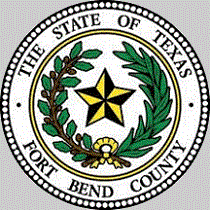Loading Data
Find USDA Eligible Properties in Fort Bend County
 browse list of realtors working in Fort Bend County
browse list of realtors working in Fort Bend County
Fort Bend county has 3 usdaproperties.com realtors ready to help with your search!
| April Featured Agents | |
|---|---|
| Sherry Winkel | from JPAR - The Sears Group |
| Tony Hiner | from Home Smart |
Looking to buy in Fort Bend County, Texas?
There are 666 USDA backed residential loans in Fort Bend county with an average loan balance of $149,618. Over 94% of the loans helped first time home buyers. Borrowers were an average age of 42 years old. The typical appraised home value was around $149,069. On average the rural home size purchased with this loan was approximately 1,864 SqFt. Alternate income limits exist to determine loan eligibility in Fort Bend county. For a household of upto 4 people the income limit is $90,650. For a household of between 5 and 8 people the income limit increases to $119,650.
The size of Fort Bend County is roughly 2,294 square kilometers. USDA defined regions of rural loan ineligibility in Fort Bend cover 826 square kilometers of the county. Approximately 36.0% of Fort Bend County is ineligible for traditional USDA home loans. The influence score for Fort Bend County is 1. Look below for the interactive county level map illustration below for more details.
Select from the list of cities below or use the search feature to find active property listings in a city where you would like to live.
Start your search for USDA loan eligible properties in the cities of Fort Bend County, TX ![]()
* cities most likely to have USDA loan eligible properties for sale.
Arcola • *Beasley • Booth • Cinco Ranch • Clodine • Crabb • Cumings • Duke • *Fairchilds • Fifth Street • Foster • Four Corners • Fresno • *Fulshear • Guy • Hawdon • Juliff • *Kendleton • Long Point • McHattie • Meadows Place • Mission Bend • Missouri City • *Needville • *Orchard • Pecan Grove • *Pleak • Powell Point • Richmond • Rosenberg • Sienna Plantation • *Simonton • Stafford • Sugar Land • Tavener • *Thompsons • Town West • *Weston Lakes
A USDA loan is a mortgage option available to eligible homebuyers that is sponsored by the United States Department of Agriculture to promote homeownership in rural communities. USDA Loans, sometimes called "RD Loans," offer 100% financing options on eligible rural properties. USDAProperties can help you find USDA properties in Fort Bend County.
View the detailed USDA boundaries and read about general conditions of
Fort Bend County, Texas
 .
.Fort Bend County, in the great state of Texas, has a rich and diverse history that traces its roots back to the early part of the 19th century. Located in the southeastern part of the state, it covers an area of approximately 885 square miles and is now part of the Houston metropolitan area.
The region now known as Fort Bend County was originally inhabited by Native American tribes, including the Karankawa and the Akokisa. As European settlers arrived in the area, Spanish explorer Alonso Alvarez de Pineda became the first European to map the Texas coastline in 1519. However, the first permanent settlement in the region wouldn't be established until the 1820s when Stephen F. Austin, known as the "Father of Texas," brought a group of settlers called the "Old Three Hundred" to colonize the area along the Brazos River.
In 1837, just a year after Texas gained its independence from Mexico, Fort Bend County was officially established and named after a blockhouse called "Fort Bend," which was built during the Texas Revolution on a bend along the Brazos River.
Through the years, Fort Bend County flourished, primarily due to its rich soil and well-situated location near important trade routes like the Brazos River and the Buffalo Bayou. Plantations were established, and cotton and sugar production became a tremendous part of the county's economy, with slavery playing a significant role in its workforce. Following the Civil War and the end of slavery, the county's economy restructured, and various industries started to emerge, improving its economic condition.
Today, Fort Bend County is one of the most populous and diverse counties in Texas, and it has experienced rapid population growth and urban expansion in recent years. It is well known for its top-rated schools, strong economy, and vibrant communities.
As for a fun fact, Fort Bend County is home to the George Ranch Historical Park, which offers visitors a trip back in time as they explore the 20,000-acre working ranch's various historical sites and structures, ranging from the 1830s pioneer era to the 1930s oilfield boom. It is a living history museum where visitors can learn and experience the rich heritage of Texas firsthand.
Featured Cities of Texas







